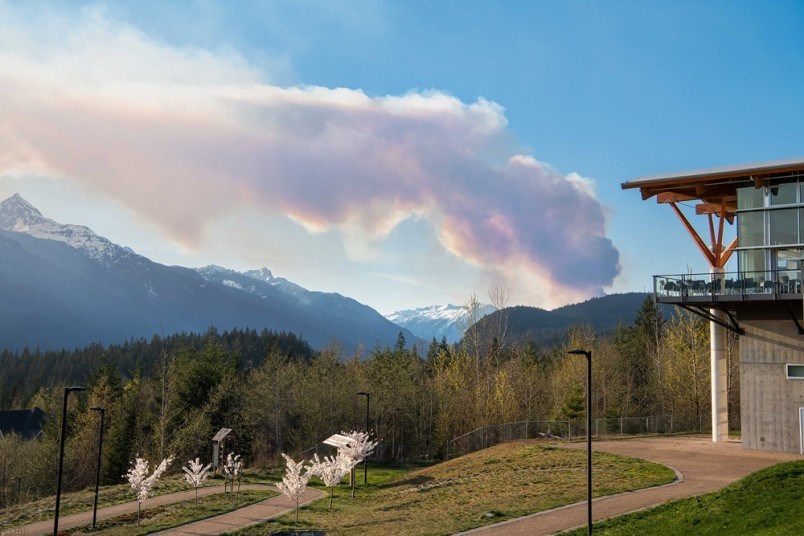Initial rough estimates indicate that about three homes were destroyed and between 60 to 100 people have been displaced by the Squamish Valley fire.
Tony Rainbow, chair of the Squamish-Lillooet Regional District board, said that these numbers are still preliminary and subject to change.
There may have been more structures, such as sheds and barns that were also destroyed, he said.
Marg Drysdale, fire information officer at the Coastal Fire Centre said that new estimates show that the fire spans 203 hectares. The fire didn’t grow, but rather more accurate assessments have been made.
The wildfire continues to burn near Squamish. Air quality remains good but smoke may move overnight towards our region due to outflow winds. Fine particulate matter levels could be elevated overnight in Lions Bay, Bowen Island, parts of West Vancouver. https://t.co/Rc2gAF5HEf pic.twitter.com/ia78FrS0NZ
— Metro Vancouver (@MetroVancouver) April 17, 2020
She said today 46 firefighters are working the fire alongside four helicopters, three excavators, two structural protection units, and two danger tree fallers, who will cut down hazardous trees.
Drysdale added temperatures are cooler Friday, April 17, and winds are down, so hopefully significant progress can be made.
She said the blaze is being characterized as between Rank 1 and 2. The former describes smokey ground, while the latter is characterized as smokey ground with occasional flames.
Rainbow added that the number of people displaced is still hard to figure out, as several people stayed in their homes despite the evacuations.
The next step is now to figure out how to house people that lost their homes.
Inside the frontline #Squamish #SquamishValleyFire @slrd_bc @Squamishtown @BCGovFireInfo #ThisIsWhatWeDo #Everyonehasapart #collaboration pic.twitter.com/y7i11qkKPt
— Squamish RCMP (@SquamishRCMP) April 17, 2020
At the moment, displaced people are being housed in hotels throughout Squamish and there are plans to house people in Whistler in case an overflow happens. However, there’s a time limit to how long they can stay.
Rainbow said the SLRD is working with landlords in the Squamish area to try and figure out long-term rentals for these people.
And it’s not just people who’ve lost their houses that may be in need of longer term accommodations. Power lines were knocked out and could take weeks or months to re-establish. Some houses in the valley rely on electric well water pumps for their water, and until power is established, they won’t be able to return home.
With respect to the Squamish Nation, the fire hasn’t damaged any homes in its territory, but members in nearby areas remain on evacuation alert.
Michelle George, the Nation’s Squamish Valley administrator, said that seven elders in the area were evacuated as precaution.
That was due concerns the smoke would affect their health, as well the fact that, in some cases, transporting them could be more challenging.
Everyone else in the area has remained in place, she said.
This story was originally published by The Squamish Chief on April 17.




